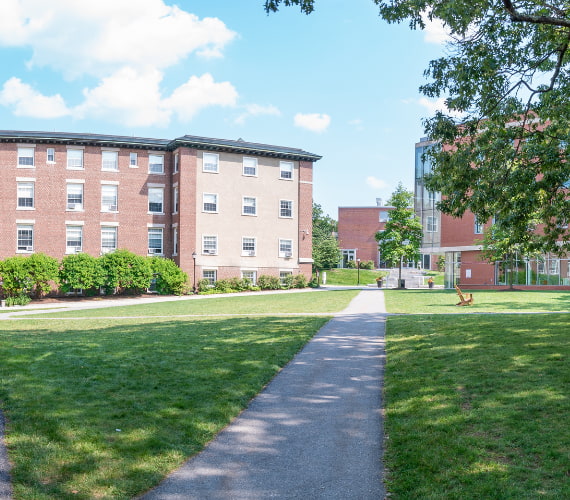There are several components of the college admission process. There’s the application, interview, essay, and yes, the high school resume. While most students reach out for support in their application, interview, and essay, many times the high school resume is overlooked. Here are some tips for building and formatting an effective high school resume.
What Is a High School Resume?
A high school resume, also known as a college admission resume, is a short, one to two page document that lists a student's academic, athletic, and personal accomplishments. While the structure may be similar to job-oriented resumes, a resume built for college admission is very different in what it includes, because it also documents personal experiences. When put together, all components of a high school resume should demonstrate to an admission officer that you are a good fit for their school.
Despite constantly evolving college admission requirements, a high school resume is still considered a powerful supplemental piece of your college application, and can make a difference in whether or not you are accepted. It allows you to offer more context into who you are as a student, and more importantly, an individual.
For those ready to start their high school resume, but unsure what components are essential to a successful layout, here’s an overview of what should be included and why this can make such a difference in your college application.
Five Things You Should Include in Your High School Resume
Authenticity is an incredibly important aspect of your college application. You want your application, resume, and college essay to stand out from the thousands of other submissions admission counselors review on an annual basis. However, there are still required components of an effective resume that all students should incorporate if they hope to be considered.
1. Important Contact Information
It’s important to include all relevant contact information somewhere on your high school resume. It’s typically listed at the top of the document, but can be moved to different sections depending on formatting and design.
The most important contact information to include is:
- Full name
- Address
- Phone number
- Email address
Even though this information is included in your college application, it’s smart to incorporate it in your high school resume to give your document a more professional appearance. It also provides your personal information to the admission counselor reviewing your resume. You want to make sure they know who you are and how to contact you through every phase of the reviewing process.
2. Resume Objective
Most high school resumes include a sentence explaining a student’s reasoning for applying to a particular school. For this reason, it’s often a good idea to have several versions of your resume, depending on the reasons you are applying to your list of schools. Motivations to apply to a particular college may be different from school to school, but resume objectives are meant to speak to the college and program, rather than your desired field of study. Therefore, make sure your statement focuses on that.
3. Academic Achievements
Academic achievements are probably the most important aspect of a high school resume because admission officers want to see what kind of student you’ve been the last four years of high school. Some of these achievements can include:
- Academic awards
- GPA
- Class rank
Not every student makes the honor roll, but that doesn’t mean you can’t leverage this part of your resume to your advantage. Even if you’re not in the top five percentile of your class, you might still be able to highlight your academic progress. For example, if you increased your grades from a C- to B-average you can highlight this on your resume to show admission officers you can work hard and progress throughout your academic career.
4. Extracurricular Activities
Extracurricular activities is another anchor section of your resume that’s essential to your application’s success. Even the best students need to have some type of socialization outside of academics to show colleges they are a well-rounded individual. Some of these extracurricular activities can include:
- Sports
- Clubs
- Activities outside of school
Just as students aren’t always on the honor roll, not everyone can be captain of a sports team or class president. For those students, it’s important to think outside of the box. For example, if you spend a lot of your time playing video games, try to find creative ways to use that to your advantage and showcase your personality. Maybe you started an online chatroom for others to share ideas and strategies. Or perhaps you run your own livestream. These are all great things to demonstrate initiative to admission officers who would have otherwise reviewed a sparse extracurricular activity section.
5. Work/Volunteer Experience
If you’re a student who works part-time, it’s imperative to include this somewhere on your resume. Not only does this account for time spent outside of the classroom, it touches on both your hard and soft skills as a young adult. One of the most common types of business high school students work in is the service industry. This gives students valuable skills such as effective communication, time management, and problem solving.
Volunteer work is also incredibly important to a high school resume. These types of projects show admission officers that you have initiative and can take on responsibilities outside of academics. Remember, no volunteer work is too small. If you spend your weekends mowing your neighbors’ lawns, this still speaks to who you are as a young adult.
Formatting Tips for an Effective Resume
Now that you understand what a high school resume needs, it’s essential to put it together in a way that effectively communicates who you are and why you are a good fit for a particular school.
If you’re overwhelmed with the information you’ve compiled for your resume, just remember that “It's less about how much is on there and more about how to prioritize the things you put on there,” says Alex Patturelli, director for undergraduate admission. Here’s a few formatting tips that should help you through the final stages of creating your resume.
Leave Enough White Space
Despite the common assumption that jam-packed resumes make applicants look more impressive, in reality they can deter admission officers. This is largely due to the fact that “busy” resumes are too hard to read or follow. Without visual breaks, the eye doesn’t know where to start and can often get lost in a sea of text.
“You don't have to overload it,” says Patturelli. If you can’t fit everything you want without sacrificing readability, consider making some major cuts to include only the most important information. This is another reason multiple drafts of your resume may come in handy. Just like a resume objective may differ from school to school, so may the most important sections/elements of your resume. Keep this in mind when compiling your achievements.
Create Clear Subheadings
Another way to break through the noise of too much text is to format your resume using clear subheadings. With readability being so important, subheadings are essential to creating an easily scannable document for admission officers to review. It’s important to keep in mind that these subheadings increase the necessity of including all required sections to your resume. An easily scannable resume makes it easier to tell whether any sections are absent.
Put Unique Elements at the Top
As mentioned earlier, contact information is typically included at the top. This isn’t a requirement, however, especially if you leverage the top section of your resume effectively. Patturelli suggests that students use the top of their resume to highlight authentic aspects of their accomplishments.
“I think unique things are more important to put at the top. For example, everybody likes to include when they're a captain of a sports team, but not everybody can say they’ve attended a leadership program in Washington, D.C.” These unique elements can set you apart from the competition right away and set the tone for the remainder of your application.
Add Time Commitment Sections
Time commitment sections are not a requirement of high school resumes, but can be a useful tool to give admission officers more context. This is particularly important for students with sparse resumes.
“Sometimes we'll see a student who has almost nothing on their resume, but they have a part-time job listed,” says Patturelli. “And for me, a part-time job is just as much as having 10 different things on your resume.” Quantifying what that time looks like per day or week can really show admission who you are.
Why Is a High School Resume Important?
A high school resume, like most resumes, is supposed to give the reviewer some context into what you’ve done, what you’ve accomplished, and who you are. High school resumes, however, should have far more emphasis on who you are. Don’t waste this opportunity by underestimating the value of your resume.
“One of my biggest pet peeves is when a student leaves the whole resume or the activity section on the common app completely blank,” says Patturelli. “Then I read their guidance counselor recommendation and find out they're actually involved in 50 different things.”
If you’re worried about coming off as pretentious in your list of accomplishments, Patturelli suggests getting a little more comfortable with bragging about yourself. “I always put more value on the student being able to tell me what they're involved in versus the guidance counselor telling me.”
Create an Effective Resume
High school resumes are often an overlooked supplemental document that is incredibly valuable to your college application. It gives you the space to brag about yourself, reveal your passions, and even show admission officers your potential both academically and professionally.




